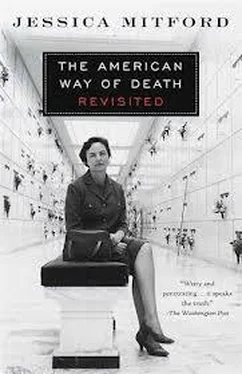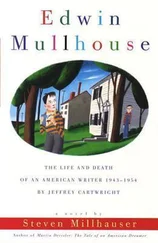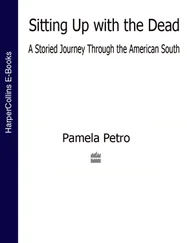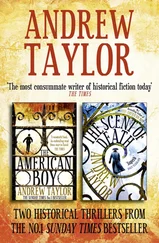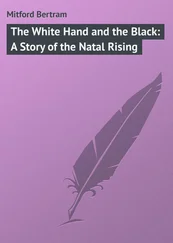Men have been most phantasticall in the singular contrivances of their corporal dissolution….
—SIR THOMAS BROWNE,
Urne-Buriall
“The No. 280 reflects character and station in life. It is superb in styling and provides a formal reflection of successful living.” This is quoted from the catalogue of Practical Burial Footware of Columbus, Ohio, and refers to the Fit-a-Fut Oxford, which comes in patent, calf, tan, or oxblood with lace or goring back. The same firm carries the Ko-Zee, with its “soft, cushioned soles and warm, luxurious slipper comfort, but true shoe smartness.” Just what practical use is made of this footwear is spelled out. Burial footwear demonstrates “consideration and thoughtfulness for the departed.” The closed portion of the casket is opened for the family, who on looking see that “the ensemble is complete although not showing. You will gain their complete confidence and good will.” The women’s lingerie department of Practical Burial Footwear supplies a deluxe package, in black patent box with gold-embossed inscription, of “pantee, vestee,” and nylon hose, “strikingly smart—ultimate in distinction.” Also for the ladies are custom burial gowns, bootees, stole, and bra “for post mortem form restoration,” offered by Lipari Gowns of Johnstown, Pennsylvania.
Florence Gowns of Cleveland, Ohio, exhibited their line of “streetwear type garments and negligees,” together with something new, a line of “hostess gowns and brunch coats,” at a convention of the National Funeral Directors Association. (However, the devotional set exhibit at the same meeting, put on by Kelco Supplies of Minneapolis, while it included “The Last Supper,” failed to come through with a “Last Brunch.”)
Casket styles range from classic (that is, the “urn theme”) to Colonial to French provincial to futuristic—the “Transition” casket, styled for the future—surely, something here to please everybody. The patriotic theme comes through very strong, finding its most eloquent expression in the Batesville Casket Company’s “Valley Forge,” designed to reflect the rugged, strong, soldierlike qualities associated with that historic theme…. “Its charm lies in the warm beauty of the natural grain and finish of finest maple hardwoods. A casket designed indeed for a soldier—one that symbolizes the solid, dependable, courageous American ideals so bravely tested at Valley Forge.” For all its soldierlike qualities, it looks most comfortable, with its nice beige linen pillow and sheets. On the wall behind it hangs a portrait of George Washington, who is looking, as usual, rather displeased.
For the less rugged, the bon vivant who dreams of rubbing shoulders with the international smart set, the gay dog who would risk all on the turn of a card, there is the “Monaco,” a Duraseal metal unit “with Sea Mist Polished Finish, interior richly lined in 600 Aqua Supreme velvet, magnificently quilted and shirred, with matching jumbo bolster and coverlet.” Set against a romantic background depicting a brilliant Riviera sky, its allure heightened by suggestions of tropical ferns and a golden harp, this model can be had for not much more than a first-class airfare to Monte Carlo.
And for the homebody who is neither rugged nor daring, but is interested in solid comfort, medium-priced metal caskets are now equipped with the “Beautyrama Adjustable Soft-Foam Bed. Quality mattress fabric is used and height and adjustment is accomplished by patented means which eliminate cranking. Modified during a year of product development, the bed is soft and buoyant, but will hold firm without slipping.”
Well, there is a great deal more to it. The observer, confronted for the first time by the treasures and artifacts of this unfamiliar world, may well feel something akin to the astonishment of Bernal Díaz del Castillo at his first glimpse of the hitherto undiscovered court of Montezuma: “We were amazed,” he declared, “and some of the soldiers even asked whether the things we saw were not a dream.”
And not to be outdone in trendiness, Doric offers “a feminine alternative in burial vaults… products with soft rose and white exterior finishes in a range of prices to suit every family’s needs.” Top of the line is the Rose Patrician, with “all matching carapace with a formed rose emblem and nameplate.”
Then there is Brocatelle, one of the Batesville Casket Company’s decorator fabrics, “hand-loomed in the traditional European manner, custom designed, typical of the rich heavy-figured fabrics used by royalty during the seventeenth, eighteenth and nineteenth centuries. These fabrics are color oriented with sculptured panels of complementary hues, an interpretation of the finest art and sculpture, usually found only in the world’s leading decorator houses.”
The burial vault is a relative newcomer in funeral wares. As late as 1915, it was used in only 5 to 10 percent of all funerals—a far cry from today’s proud slogan of a leading vault manufacturer, “A Wilbert Burial Vault Every Minute” (based, a footnote tells us, on an eight-hour workday). Since the word “vault” may connote to the uninitiated a burial chamber, a word of explanation is in order. The vault we are describing here is designed as an outer receptacle to protect the casket and its contents from the elements during their eternal sojourn in the grave. Vaults are made of a variety of materials; they may be of concrete, pre-asphalt-lined; of aluminum; of a copper, asphalt, and concrete mixture; of fiberglass. In any case, a good vault is a “symbolic expression of affection.” They are getting more beautiful by the year, may be had in a variety of colors including polished stripes, and are frequently decorated with all sorts of lovely things—foreverness symbols like trees of life or setting suns—leading one to speculate as to whether the time may not be ripe for the introduction of a sur- or super- or supra-vault, and so on and on, like those little wooden eggs-within-eggs we used to find in our Christmas stockings.
I happened to have had a bracing confrontation with a vault salesman. Vidalia, Georgia—a very small town south of Savannah—is the home of the Ohoopee Public Library which was having a symposium on death—very big in recent years at colleges, library associations, and the like.
The death meetings were scheduled on successive Tuesdays, to be addressed by ministers on religious aspects, philosophers, etc…. and I was the leadoff speaker on the death industries. Brought in, I suppose, as a bit of comic relief.
But then the American Legion attacked. They blasted the Ohoopee Public Library for giving a platform to a well-known subversive. And they sent copies of all the old House Un-American Activities Committee reports to the newspapers. So the newspapers, even in far-off Savannah, sprang into life and carried the releases.
The librarians fought back. “Everybody can have his or her say at the Ohoopee Public Library,” they said. They also had the clever idea of sending special invitations with free tickets to all the funeral directors and associated industries for miles around… underlining the free-speech message and urging them to come.
As a result of this totally unexpected publicity, which blanketed the area, the lecture had to be moved from a small meeting hall to the high school auditorium, which was absolutely packed. The chairman led off, repeating the free-speech stand of the library and asking, “Are there any members of the funeral profession here?” Upon which, twelve black suits stood up, all in a row, and then sat down.
I gave my talk, which seemed to be well received because most people in Vidalia as elsewhere have at one time or another suffered from the machinations of the funeral industry. When the question period came, I asked first whether there were any questions from the funeral contingent. A black suit rose up and he said, “I am a vault man. I sell vaults. I listened to Mrs. Mitford’s speech and she never said that when Jesus Christ our Lord was crucified, a rich man gave him his vault.” And then he sat down. I replied that since I spend a lot of time in motels where the only reading matter supplied was a Bible, I was indeed familiar with the story of Joseph of Arimathea and his gift to Jesus of his vault. But if you read further, it seems he didn’t stay there all that long. I mean he was up and out in three days.
Читать дальше
